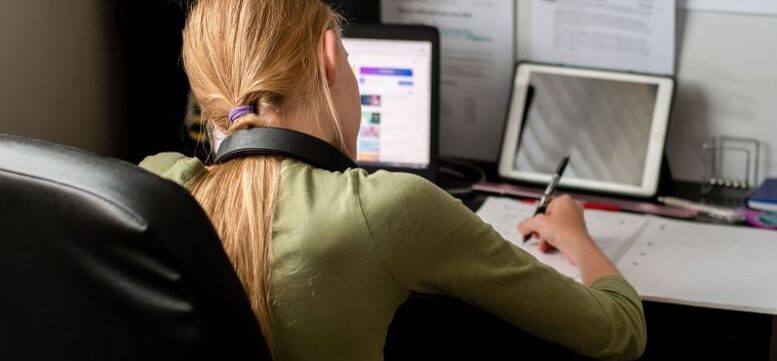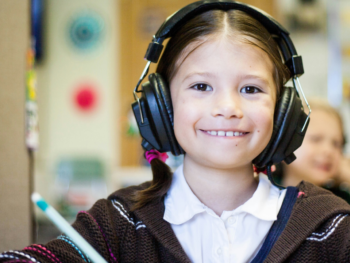In the wake of COVID-19, many public brick-and-mortar schools transitioned to virtual learning.
While these schools held classes online, their model was very different from traditional online schooling. They took the in-person model and transferred it online — same start time, same schedule, and, in most cases, the same lesson plans and schoolwork.
This has given some people the wrong impression of what online school is. It isn’t just a school that is held virtually. Most online schools follow a completely different model. Let’s take a look at that model now.
What Online School is (and What it Isn’t)
Online schools are schools where the curriculum was designed to be taught online. This may not seem like an important distinction, but trust us when we say it is. Where brick and mortar schools that have transitioned to virtual learning have students in front of the screen 6-8 hours of the day, online schools function a little differently.
With the exception of younger students who require lots of engagement to stay on task, students attending online school typically only have one to two set class periods a day. The course materials, lesson plans, and recordings, and coursework are all housed in an online management system, so students can digest lesson content and complete their work with more control and freedom than a brick-and-mortar school allows. Many teachers have additional live sessions each week as well where students can receive more personal instruction and ask any questions they may have.
How Online School Works: Enrollment
According to schoolchoiceweek.com, online public schools have been established by state authorities, school districts, or charter schools in 35 states, meaning students can attend these schools full-time and tuition-free.
States that do not currently offer online public school programs are:
- Alaska
- Connecticut
- Delaware
- Hawaii
- Illinois
- Kentucky
- Maryland
- Mississippi
- Montana
- Nebraska
- New Jersey
- New York
- North Dakota
- Rhode Island
- South Dakota
- Vermont
- West Virginia
Not having a public option in your state doesn’t mean you’re unable to enroll your student in an online program — there are plenty of paid online school programs that are offered in all fifty states.
Whether public school options are available to you or not, if you are interested in online education for your student, we recommend heading to a search engine like Google and connecting with any schools that you are interested in.
Connecting with the school will give you an opportunity to ask any questions you have and learn about the specific policies of that school.
How Online School Works: Scheduling
Scheduling for online schooling is incredibly flexible and can be great for students who have busy or unique schedules. Older students typically only have one or two set class times a day and all coursework and written lessons are available online, so students can set their one daily schedules. Outside of any set class periods, if your student is a late riser, they can start the school day at 10:00 AM. If they prefer to wake up early and get coursework done, they can start at 6:00 AM. If your student has piano lessons or another hobby during the day, you can build their schedule around that time.
You and your student have the freedom to create whatever schedule works best for them, with the only caveat being a couple of set class periods a day.
Now, don’t get the wrong idea. While your student may only have to attend a couple of classes a day, they should still plan on dedicating roughly six and a half hours to their education each weekday. The benefit is that how they spend that time and the cadence at which they work is almost completely up to them.
How Online School Works: Technology
One of the biggest questions parents tend to ask about online school is what is provided by the school. You can’t very well send your child to online school without a quality computer and WiFi. We would love to say that WiFi and laptops are provided to all students across the country who enroll in an online program, but that just isn’t the case. Depending on the program/s your state offers you may have to invest in better WiFi for your household and a computer for your child.
How Online School Works: Cost
Another question we frequently run into is the cost of attending online school. Online public school programs are completely free as they are paid for by the state. However, if you live in a state that does not offer a public online program, you will have to pay tuition for a private online school. The average cost for a private high school program in the United States is $14,522, so it can be very costly. You can revisit the “How Online School Works: Enrollment” section of this post to see if a free, public online school program is offered in your state.
Interested in Having Your Student Attend a Michigan Online School?
If you’re interested in having your child attend an online school and you are located in or moving to Michigan, please don’t hesitate to get in touch with us. We can answer any questions you have and are more than happy to walk you through the enrollment process. Just click here to get in touch with us!






